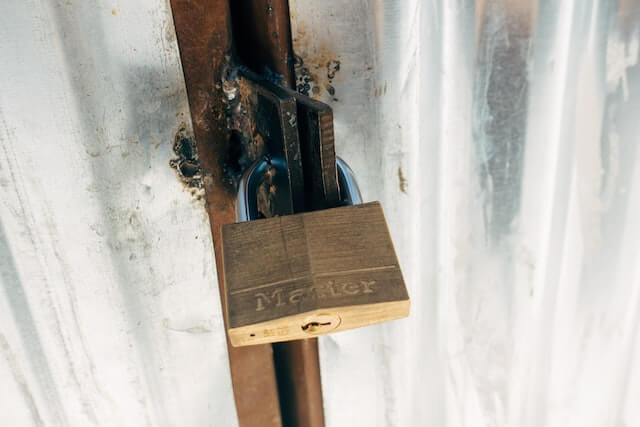调度系统中加密算法的使用/增加SM4补0方法/Use of encryption algorithms in scheduling systems/add SM4 complementary 0 method
数据加密的基本思想是通过变换信息的表现形式来伪装需要保护的敏感信息,非授权者不能了解被加密的内容。
根据业务场景,使用国密SM3/SM4加算法实现数据传输的安全性,提高数据的可靠性,满足客户场景中其他系统的接入条件
使用github上star最多的https://github.com/duanhongyi/gmssl,但是该项目截止使用时暂未实现0填充算法,后来补齐后https://github.com/kanghaov/gmssl
pr给开发者,现已实现
通讯协议
一般选定加密的通讯协议,双方约定响应的加密流程,笼统的例子:
约定信息生成sign,返回token,在token有效期内作为鉴权标志,根据需要也可以一个操作主体一个token
1.计算sign
# 定制方提供
appId = "1234567890"
appSecret = "1234567890"
person_id = "1234567890"
encryption_methon() # 约定使用sm3加密
# 请求方使用
sign = encryption_methon(appSecret,person_id,timestamp,requestId) # 生命周期7200s,SM3
使用gmssl的sm3模块加密sign,例子:
sign = '00000158ea0a3cef18c45e769f7136de7977db3f0000015815261641523970076F6B86C8FA70AC4CB'
encoded_sign= sm3.sm3_hash(func.bytes_to_list(bytes(sign, encoding="ascii")))将请求信息按照预定的格式生成后使用SM4对明文进行加密后请求服务端
SM4
2.加密请求数据:
原数据格式使用json.dumps()及bytes()转换成bytes
resData= {'requestId': 'asf0ei8xts9ibvbv809piudtk6qtjkem', 'timestamp': '1660816878517', 'projectId': '00001842', 'robotId': '000018425682', 'sign': 'edcb260f7d2231d695c028362372c705c923d30da7d51892258f6b45d8ad2527'}
resData = bytes(json.dumps(resData),encoding="ascii")由于该客户要求SM4加密算法使用ECB模式、0补码、utf-8编码,而目前github上主要的基于python的SM4算法均采用PKCS7补码及解码,需要自己补充0补码的实现方式,两者的区别只是以16byte划分数据,对于尾部不满16byte的数据,用[16-尾部数据长度]字符进行填充还是用0进行填充,不同padding方式,加密结果如下:
pkcs7:
data = [34, 123, 92, 34, 114, 101, 113, 117, 101, 115, 116, 73, 100, 92, 34, 58, 32, 92, 34, 101, 97, 48, 97, 51, 99, 101, 102, 49, 56, 99, 52, 53, 101, 55, 54, 57, 102, 55, 49, 51, 54, 100, 101, 55, 57, 55, 55, 100, 98, 51, 102, 92, 34, 44, 32, 92, 34, 115, 105, 103, 110, 92, 34, 58, 32, 92, 34, 97, 101, 50, 98, 97, 56, 49, 49, 48, 49, 57, 99, 55, 49, 49, 50, 101, 98, 56, 101, 55, 52, 100, 50, 54, 53, 99, 55, 51, 52, 98, 48, 53, 101, 97, 55, 54, 49, 102, 56, 56, 50, 56, 99, 101, 50, 102, 54, 101, 102, 50, 98, 100, 99, 54, 100, 49, 100, 50, 54, 100, 53, 51, 50, 92, 34, 44, 32, 92, 34, 114, 111, 98, 111, 116, 73, 100, 92, 34, 58, 32, 92, 34, 48, 48, 48, 48, 48, 49, 53, 56, 49, 53, 50, 54, 92, 34, 44, 32, 92, 34, 112, 114, 111, 106, 101, 99, 116, 73, 100, 92, 34, 58, 32, 92, 34, 48, 48, 48, 48, 48, 49, 53, 56, 92, 34, 44, 32, 92, 34, 116, 105, 109, 101, 115, 116, 97, 109, 112, 92, 34, 58, 32, 92, 34, 49, 54, 52, 49, 53, 50, 51, 57, 55, 48, 48, 55, 54, 92, 34, 125, 34, 11, 11, 11, 11, 11, 11, 11, 11, 11, 11, 11] 240
0:
data = [34, 123, 92, 34, 114, 101, 113, 117, 101, 115, 116, 73, 100, 92, 34, 58, 32, 92, 34, 101, 97, 48, 97, 51, 99, 101, 102, 49, 56, 99, 52, 53, 101, 55, 54, 57, 102, 55, 49, 51, 54, 100, 101, 55, 57, 55, 55, 100, 98, 51, 102, 92, 34, 44, 32, 92, 34, 115, 105, 103, 110, 92, 34, 58, 32, 92, 34, 97, 101, 50, 98, 97, 56, 49, 49, 48, 49, 57, 99, 55, 49, 49, 50, 101, 98, 56, 101, 55, 52, 100, 50, 54, 53, 99, 55, 51, 52, 98, 48, 53, 101, 97, 55, 54, 49, 102, 56, 56, 50, 56, 99, 101, 50, 102, 54, 101, 102, 50, 98, 100, 99, 54, 100, 49, 100, 50, 54, 100, 53, 51, 50, 92, 34, 44, 32, 92, 34, 114, 111, 98, 111, 116, 73, 100, 92, 34, 58, 32, 92, 34, 48, 48, 48, 48, 48, 49, 53, 56, 49, 53, 50, 54, 92, 34, 44, 32, 92, 34, 112, 114, 111, 106, 101, 99, 116, 73, 100, 92, 34, 58, 32, 92, 34, 48, 48, 48, 48, 48, 49, 53, 56, 92, 34, 44, 32, 92, 34, 116, 105, 109, 101, 115, 116, 97, 109, 112, 92, 34, 58, 32, 92, 34, 49, 54, 52, 49, 53, 50, 51, 57, 55, 48, 48, 55, 54, 92, 34, 125, 34, 0, 0, 0, 0, 0, 0, 0, 0, 0, 0, 0]源代码中gmssl/func.py:
padding = lambda data, block=16: data + [(16 - len(data) % block)for _ in range(16 - len(data) % block)]
unpadding = lambda data: data[:-data[-1]]新增0补码,为:
pkcs7_padding = lambda data, block=16: data + [(16 - len(data) % block)for _ in range(16 - len(data) % block)]
zero_padding = lambda data, block=16: data + [0 for _ in range(16 - len(data) % block)]
pkcs7_unpadding = lambda data: data[:-data[-1]]
zero_unpadding = lambda data,i =1:data[:-i] if data[-i] == 0 else i+1
选择不同补码方式只需要在SM4模块中SM4类实例化的时候传参进去就好了
仓库地址:
3.解密返回数据
直接调用相关函数,选择0填充方式会自动选择响应的解码方式,解密后:
{
"data": {
"token": "xAeTiWxw99Eg7QBm5qR6fIGDmrcaaUtLzlZ2zpOl0HKcvV6MYZiiW5e+ThvBzIy8"
},
"msg": "成功",
"msgCode": 0,
"requestId": "ea0a3cef18c45e769f7136de7977db3f",
"sign": "d81840ab9ec6a97085afe1bee085f6e0fea2c38ba4d65b5936abcaabc079c6c9",
"success": true,
"timestamp": "1641868606481"
}这样就获取了请求对象专属的token,后续请求时,相应的请求主体附带上token和encryptScript信息就好了
另:
相比于使用python内置的数据结构,某些场景更喜欢使用class搭配__repe__方法实现数据的存储,比如:
class appInfo:
"""
开发者信息
"""
def __init__(self, appId="", appSecret="", getTime=""):
self.appId = appId
self.appSecret = bytes(appSecret, encoding="ascii")
self.appSecretStr = appSecret
self.getTime = getTime
def __repr__(self):
return "appId = {0},appSecret={1},appSecretStr={2},getTime={3}".format(
str(self.appId),self.appSecret,str(self.appSecretStr),str(self.getTime))可以对数据有更多的处理方式
The basic idea of data encryption is to disguise the sensitive information to be protected by transforming the manifestation of information, so that unauthorized persons cannot understand the encrypted content.
According to the business scenario, we use SM3/SM4 encryption algorithm to realize the security of data transmission, improve the reliability of data, and meet the access conditions of other systems in the customer scenario
Use https://github.com/duanhongyi/gmssl which has the most stars on github, but the project has not implemented the 0-fill algorithm as of the time of use, and then https://github.com/kanghaov/gmssl
pr to the developer, now realized
Communication protocol
Generally selected encryption communication protocol, both sides agree on the encryption process of the response, generalized example.
The agreed information generates a sign, returns a token, which is used as a forensic marker during the validity of the token, and can also be an operation subject a token as needed
- Calculate sign
# provided by the customizer
appId = "1234567890"
appSecret = "1234567890"
person_id = "1234567890"
encryption_methon() # covenant to use sm3 encryption
# The requesting party uses
sign = encryption_methon(appSecret,person_id,timestamp,requestId) # Lifecycle 7200s,SM3
Use the sm3 module of gmssl to encrypt the sign, example:
sign = '0000000158ea0a3cef18c45e769f7136de7977db3f0000015815261641523970076F6B86C8FA70AC4CB'
encoded_sign= sm3.sm3_hash(func.bytes_to_list(bytes(sign, encoding="ascii")))After generating the request message in the predefined format, use SM4 to encrypt the plaintext and request the server side
SM4
- Encrypt the request data.
The original data format is converted to bytes using json.dumps() and bytes().
resData= {'requestId': 'asf0ei8xts9ibvbv809piudtk6qtjkem', 'timestamp': '1660816878517', 'projectId': '00001842', 'robotId': '000018425682 ', 'sign': 'edcb260f7d2231d695c028362372c705c923d30da7d51892258f6b45d8ad2527'}
resData = bytes(json.dumps(resData),encoding="ascii")Since the customer requires SM4 encryption algorithm to use ECB mode, 0 complement, utf-8 encoding, and the main python-based SM4 algorithms on github currently use PKCS7 complement and decoding, you need to add your own 0 complement implementation, the difference between the two is only to divide the data by 16byte, for the tail is less than 16byte data , padding with [16 – tail data length] characters or padding with 0, different padding methods, the encryption results are as follows.
pkcs7:
data = [34, 123, 92, 34, 114, 101, 113, 117, 101, 115, 116, 73, 100, 92, 34, 58, 32, 92, 34, 101, 97, 48, 97, 51, 99, 101, 102, 49, 56, 99, 52, 53, 101, 55, 54, 57, 102 , 55, 49, 51, 54, 100, 101, 55, 57, 55, 55, 100, 98, 51, 102, 92, 34, 44, 32, 92, 34, 115, 105, 103, 110, 92, 34, 58, 32, 92, 34, 97, 101, 50, 98, 97, 56, 49, 49, 48, 49, 57, 99, 55, 49, 49, 50, 101, 98, 56, 101, 55, 52, 100, 50, 54, 53, 99, 55, 51, 52, 98, 48, 53, 101, 97, 55, 54, 49, 102, 56, 56, 50, 56, 99, 101, 50, 102, 54, 101, 102, 50, 98, 100, 99, 54, 100, 49, 100, 50, 54, 100, 53, 51, 50, 92, 34, 44, 32, 92, 34, 114, 111, 98, 111, 116, 73, 100, 92, 34, 58, 32, 92, 34, 48, 48, 48, 48, 48, 49, 53, 56, 49, 53, 50, 54, 92, 34, 44, 32, 92, 34, 112, 114, 111, 106, 101, 99, 116, 73, 100, 92, 34, 58, 32, 92, 34, 48, 48, 48, 48, 48, 48, 49, 53, 56, 92, 34, 44, 32, 92, 34, 116 , 105, 109, 101, 115, 116, 97, 109, 112, 92, 34, 58, 32, 92, 34, 49, 54, 52, 49, 53, 50, 51, 57, 55, 48, 48, 55, 54, 92, 34, 125, 34, 11, 11, 11, 11, 11, 11, 11, 11, 11, 11, 11, 11, 11] 240
0:
data = [34, 123, 92, 34, 114, 101, 113, 117, 101, 115, 116, 73, 100, 92, 34, 58, 32, 92, 34, 101, 97, 48, 97, 51, 99, 101, 102, 49, 56, 99, 52, 53, 101, 55, 54, 57, 102 , 55, 49, 51, 54, 100, 101, 55, 57, 55, 55, 100, 98, 51, 102, 92, 34, 44, 32, 92, 34, 115, 105, 103, 110, 92, 34, 58, 32, 92, 34, 97, 101, 50, 98, 97, 56, 49, 49, 48, 49, 57, 99, 55, 49, 49, 50, 101, 98, 56, 101, 55, 52, 100, 50, 54, 53, 99, 55, 51, 52, 98, 48, 53, 101, 97, 55, 54, 49, 102, 56, 56, 50, 56, 99, 101, 50, 102, 54, 101, 102, 50, 98, 100, 99, 54, 100, 49, 100, 50, 54, 100, 53, 51, 50, 92, 34, 44, 32, 92, 34, 114, 111, 98, 111, 116, 73, 100, 92, 34, 58, 32, 92, 34, 48, 48, 48, 48, 48, 49, 53, 56, 49, 53, 50, 54, 92, 34, 44, 32, 92, 34, 112, 114, 111, 106, 101, 99, 116, 73, 100, 92, 34, 58, 32, 92, 34, 48, 48, 48, 48, 48, 48, 49, 53, 56, 92, 34, 44, 32, 92, 34, 116 , 105, 109, 101, 115, 116, 97, 109, 112, 92, 34, 58, 32, 92, 34, 49, 54, 52, 49, 53, 50, 51, 57, 55, 48, 48, 55, 54, 92, 34, 125, 34, 0, 0, 0, 0, 0, 0, 0, 0, 0, 0, 0, 0, 0]Source code in gmssl/func.py.
padding = lambda data, block=16: data + [(16 - len(data) % block) for _ in range(16 - len(data) % block)]
unpadding = lambda data: data[:-data[-1]]Add 0-complement
pkcs7_padding = lambda data, block=16: data + [(16 - len(data) % block) for _ in range(16 - len(data) % block)]
zero_padding = lambda data, block=16: data + [0 for _ in range(16 - len(data) % block)]
pkcs7_unpadding = lambda data: data[:-data[-1]]
zero_unpadding = lambda data,i =1:data[:-i] if data[-i] == 0 else i+1
Choosing a different complement method is just a matter of passing in a reference when the SM4 class is instantiated in the SM4 module
Repository address.
- Decrypt the returned data
Directly call the relevant function, select 0 fill
{
"data": {
"token": "xAeTiWxw99Eg7QBm5qR6fIGDmrcaaUtLzlZ2zpOl0HKcvV6MYZiiW5e+ThvBzIy8"
},
"msg": "Success",
"msgCode": 0,
"requestId": "ea0a3cef18c45e769f7136de7977db3f",
"sign": "d81840ab9ec6a97085afe1bee085f6e0fea2c38ba4d65b5936abcaabc079c6c9",
"success": true,
"timestamp": "1641868606481"
}This will get the request object exclusive token, subsequent requests, the corresponding request body with the token and encryptScript information on the good
Also.
Rather than using python’s built-in data structures, some scenarios prefer to use class with __repe__ methods to achieve data storage, such as:
class appInfo:
"""
开发者信息
"""
def __init__(self, appId="", appSecret="", getTime=""):
self.appId = appId
self.appSecret = bytes(appSecret, encoding="ascii")
self.appSecretStr = appSecret
self.getTime = getTime
def __repr__(self):
return "appId = {0},appSecret={1},appSecretStr={2},getTime={3}".format(
str(self.appId),self.appSecret,str(self.appSecretStr),str(self.getTime))You can have more ways to handle data



发表回复